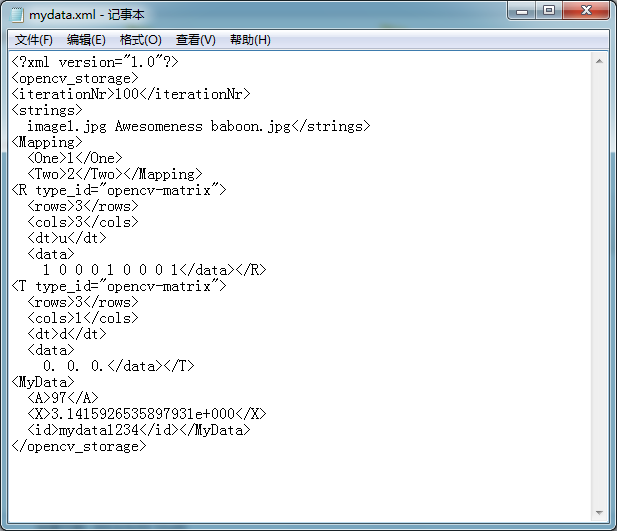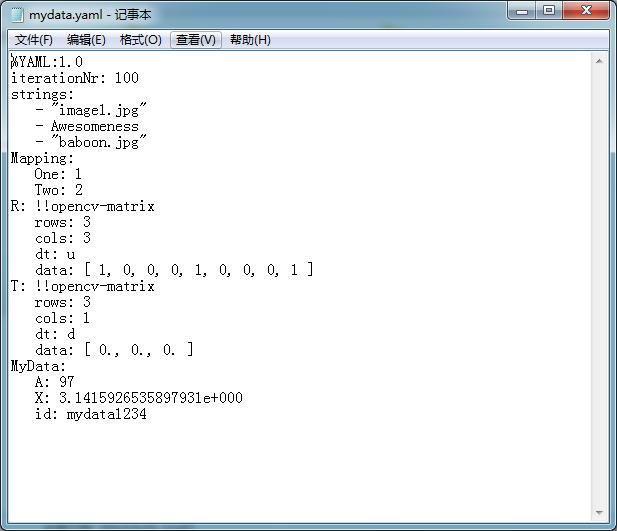- python + selenium通过滑块验证
weixin_51144854
pythonselenium爬虫opencv
1、介绍使用python进行自动化操作或者爬虫过程中,可能会遇到需要进行验证的情况。本文介绍了两种通过滑块验证的方法:轮廓检测通过OpenCV进行轮廓检测,找到滑块背景中缺口的位置,计算缺口到滑块的距离。模板匹配通过OpenCV分析滑块背景图与滑块的相似度,找到滑块背景图中与滑块最相似的区域就是缺口的位置,然后计算缺口到滑块的距离。2、轮廓检测测试地址:https://accounts.douba
- opencv —— floodFill 漫水填充法 实现证件照换背景
老干妈就泡面
opencv人工智能计算机视觉
漫水填充:floodFill函数简单来说,漫水填充就是自动选中与种子像素相连的区域,利用指定颜色进行区域颜色填充。Windows画图工具中的油漆桶功能和Photoshop的魔法棒选择工具,都是漫水填充的改进和延伸。//第一个版本intfloodFill(InputOutputArrayimage,PointseedPoint,ScalarnewVal,Rect*rect=0,ScalarloDif
- 车牌识别与标注:基于百度OCR与OpenCV的实现(一)
喜欢踢足球的老罗
大模型应用开发实践之旅ocropencv人工智能
车牌识别与标注:基于百度OCR与OpenCV的实现在计算机视觉领域,车牌识别是一项极具实用价值的技术,广泛应用于交通监控、智能停车场管理等领域。本文将介绍如何在macOS系统下,利用百度OCRAPI进行车牌识别,并结合OpenCV库在图片上绘制标注框和车牌号码,实现一个完整的车牌识别与标注流程。整个工程将使用PyCharm进行组织和开发。一、系统环境与工程结构系统环境操作系统:macOS开发工具:
- OpenCV实战:图像颜色识别与提取、掩膜制作
前言在计算机视觉和图像处理领域,颜色识别是一项基础而重要的技术。无论是交通标志识别、工业分拣还是美颜滤镜开发,都离不开对特定颜色的处理。本文将带你全面掌握使用OpenCV进行颜色识别的关键技术,包含完整的代码实现和原理讲解。一、颜色空间基础1.1RGB颜色空间在图像处理中,最常见的就是RGB颜色空间。RGB颜色空间是我们接触最多的颜色空间,是一种用于表示和显示彩色图像的一种颜色模型。RGB代表红色
- OpenCV图像添加水印
一、前言在数字图像处理中,为图片添加水印是一项常见且重要的技术。无论是版权保护、品牌宣传还是防止未经授权的使用,水印都能发挥重要作用。OpenCV作为一款强大的计算机视觉库,提供了丰富的功能来实现各种水印效果。本教程将详细介绍如何使用OpenCV为图像添加文字水印和图片水印。二、环境准备在开始之前,请确保已安装以下环境:Python3.xOpenCV库(可通过pipinstallopencv-py
- OpenCV图像噪点消除五大滤波方法
慕婉0307
opencv基础opencv人工智能计算机视觉
在数字图像处理中,噪点消除是提高图像质量的关键步骤。本文将基于OpenCV库,详细讲解五种经典的图像去噪滤波方法:均值滤波、方框滤波、高斯滤波、中值滤波和双边滤波,并通过丰富的代码示例展示它们的实际应用效果。一、图像噪点与滤波基础1.1常见图像噪声类型高斯噪声:符合正态分布的随机噪声椒盐噪声:随机出现的黑白像素点泊松噪声:光子计数噪声量化噪声:模拟信号数字化过程中产生1.2滤波方法分类滤波类型特点
- 基于OpenCV图像分割与PyTorch的增强图像分类方案
从零开始学习人工智能
opencvpytorch分类
在图像分类任务中,背景噪声和复杂场景常常会对分类准确率产生负面影响。为了应对这一挑战,本文介绍了一种结合OpenCV图像分割与PyTorch深度学习框架的增强图像分类方案。通过先对图像进行分割提取感兴趣区域(RegionofInterest,ROI),再进行分类,可以有效减少背景干扰,突出关键特征,从而提高分类准确率。该方案在多种复杂场景下表现出色,尤其适用于图像背景复杂或包含多个对象的情况。一、
- OpenCV 三维重建实战:从工业检测到自动驾驶,3 大场景代码全解析
从零开始学习人工智能
opencv自动驾驶数码相机
:工业零部件三维建模与检测案例背景:在汽车制造工厂,对于复杂形状的发动机零部件质量检测与逆向工程需求,需要高精度的三维模型。传统检测方法效率低且精度有限,而三维重建技术可快速获取零部件三维信息,实现高效检测与设计优化。技术实现:使用多个相机从不同角度拍摄零部件,利用calib3d模块进行相机标定,获取准确的相机内参和外参。通过特征点检测与匹配算法(如SIFT、ORB等)找到不同图像间的对应点,再用
- 基于opencv的鱼群检测和数量统计识别鱼群密度带界面
完整项目点文末名片查看获取一、项目简介本项目旨在通过计算机视觉技术,实现对视频中鱼类数量的自动检测与计数。利用OpenCV库进行图像处理,包括背景减除、形态学操作、轮廓检测等步骤,最终在视频帧中标记出鱼类并统计其数量。该系统可广泛应用于水产养殖、生态监测等领域,有助于提高工作效率和数据准确性。二、环境准备在开始项目之前,需要确保以下环境和工具已安装:Python:推荐使用Python3.6及以上版
- C++入门基础语法,并提到希望内容详细且包含实例Demo,我假设你现在想要一个基于C++的人脸考勤系统源码,并且希望代码适合初学者,包含详细注释和说明
zhxup606
C++c++开发语言
C++入门基础语法,并提到希望内容详细且包含实例Demo,我假设你现在想要一个基于C++的人脸考勤系统源码,并且希望代码适合初学者,包含详细注释和说明。根据搜索结果,C++人脸考勤系统通常使用OpenCV库进行人脸检测和识别,这需要一定的库配置和基础知识。以下是一个基于OpenCV的简单人脸考勤系统源码示例,适合初学者理解,代码实现基本功能:捕获摄像头画面、检测人脸、记录考勤信息,并保存到文件。C
- OpenCV CUDA模块设备层-----线性插值函数log()
村北头的码农
OpenCVopencv人工智能计算机视觉
操作系统:ubuntu22.04OpenCV版本:OpenCV4.9IDE:VisualStudioCode编程语言:C++11算法描述该函数用于创建线性插值访问器,支持对GPU内存中的图像数据进行双线性插值采样。主要应用于图像缩放、旋转等几何变换中需要亚像素级精度的场景。为输入图像构造一个基于“双线性插值”的访问器对象LinearInterPtrSz,可以在CUDA核函数中按需访问缩放后的像素值
- 基于OpenCv的图片倾斜校正系统详细设计与具体代码实现
AI大模型应用之禅
人工智能数学基础计算科学神经计算深度学习神经网络大数据人工智能大型语言模型AIAGILLMJavaPython架构设计AgentRPA
基于OpenCv的图片倾斜校正系统详细设计与具体代码实现1.背景介绍1.1图像处理的重要性在当今数字时代,图像处理技术在各个领域都扮演着重要角色。无论是在计算机视觉、模式识别、医学影像、遥感探测还是多媒体处理等领域,图像处理都是不可或缺的核心技术。通过对图像进行预处理、增强、分割、特征提取等操作,可以从图像中获取有价值的信息,为后续的分析和决策提供支持。1.2图像倾斜问题及其影响在实际应用中,由于
- 【k近邻】 K-Nearest Neighbors算法原理及流程
F_D_Z
机器学习方法数理算法学习机器学习k近邻算法k-近邻算法
【k近邻】K-NearestNeighbors算法原理及流程【k近邻】K-NearestNeighbors算法距离度量选择与数据维度归一化【k近邻】K-NearestNeighbors算法k值的选择【k近邻】Kd树的构造与最近邻搜索算法【k近邻】Kd树构造与最近邻搜索示例k近邻算法(K-NearestNeighbors,简称KNN)是一种常用的监督学习算法,可以用于分类和回归问题。在OpenCV中
- 树莓派中 Python+opencv打开摄像头
68lizi
光电设计python
树莓派中Python+opencv打开摄像头注意不要使用cap=cv2.VideoCapture(0,cv2.CAP_DSHOW),我在树莓派使用这个的时候会报错,在windows不会报错,具体原因不清楚cap=cv2.VideoCapture(0)#使用cap=cv2.VideoCapture(0,cv2.CAP_DSHOW)会报错whileTrue:status,img=cap.read()i
- Python编程:使用Opencv进行图像处理
【参考】https://github.com/opencv/opencv/tree/4.x/samples/pythonPython使用OpenCV进行图像处理OpenCV(OpenSourceComputerVisionLibrary)是一个开源的计算机视觉和机器学习软件库。下面将从基础到高阶介绍如何使用Python中的OpenCV进行图像处理。一、安装首先需要安装OpenCV库:pipinst
- 基于OpenCV-python的人脸识别系统
transuperb
完整代码opencvpython人工智能
importsysimportosimporttkinterastkfromtkinter.ttkimportStyleimportnumpyasnpimportcv2fromPILimportImageTk,ImageDraw,ImageFontfrompanel.models.tabulatorimportthemefromModelimport*fromtkinterimportttk,fi
- Python视觉实战项目31讲源码地址
机械小蛟龙
笔记opencvpython深度学习
Python视觉实战项目31讲源码地址来源:公众号小白学视觉2月1日使用OpenCV实现猜词游戏https://github.com/spmallick/learnopencv/tree/master/Hangman使用OpenCV实现图像修复https://github.com/spmallick/learnopencv/tree/master/Image-Inpainting自适应显着性的图像
- 视线实时跟踪项目
云博士的AI课堂
基于Python计算机视觉视线跟踪python计算机视觉机器视觉opencv视线检测
GitHub项目antoinelame/GazeTracking的详细介绍,包括项目概述、功能、解决的问题、应用场景、安装与使用说明等:项目概述GazeTracking是一个基于Python的开源库,利用普通网络摄像头实现实时眼动追踪。它能够检测用户瞳孔的精确位置和视线方向,支持Python2和3。该项目通过结合OpenCV和Dlib库,提供了一种低成本、高精度的眼动追踪解决方案,适用于多种应用场
- 基于OpenCV的银行卡识别
Yang了个羊
OpenCVopencv人工智能计算机视觉
一、设计思路1、预处理银行卡号序列模版,对其进行一系列形态学操作,继而进行轮廓识别,构建与各个轮廓所对应的数字元组。2、对将要识别的银行卡进行灰度处理、二值化、阈值处理,sobel算子边缘检测等预处理,再通过模版匹配方法找出与已知轮廓高度符合的数字。二、代码复现预操作:自定义一个cv_show函数,便于后来的图像展示。#绘图展示defcv_show(name,img):cv2.imshow(nam
- OpenCV实现相机标定的棋盘格制作与应用
BIG-HO
本文还有配套的精品资源,点击获取简介:在计算机视觉领域,棋盘格标定板用于获取相机参数,实现图像校正和三维重建。OpenCV库提供了绘制棋盘格和相机标定的功能。本文将详细介绍如何使用OpenCV制作棋盘格标定板,包括设计、绘制、保存、相机标定过程和应用。通过实际案例,如畸变矫正、三维重建、AR应用和机器人导航,展示棋盘格标定板在视觉技术中的关键作用。1.棋盘格设计与绘制1.1棋盘格的基本概念与应用棋
- OpenCV双目视觉棋盘格标定、特征匹配及三维坐标计算
OpenCV双目视觉棋盘格标定、特征匹配及三维坐标计算【下载地址】OpenCV双目视觉棋盘格标定特征匹配及三维坐标计算OpenCV双目视觉棋盘格标定、特征匹配及三维坐标计算本资源库提供了基于OpenCV的双目视觉系统标定和三维重建基础教程,专注于利用棋盘格作为特征目标进行相机校准,特征点匹配以及随后的三维坐标计算项目地址:https://gitcode.com/open-source-toolki
- 用python解决关于opencv对图片色点选取并与原图形成对照,代码与常见问题
枕书眠月
opencvopencv人工智能计算机视觉python嵌入式硬件开发语言
下面我们将学习opencv和HSV,因为RGB相同的颜色在各种照明条件下可能看起来不同,HSV模型将颜色信息(色调)与亮度和强度分开,这使得检测黄色、红色或绿色等颜色变得更加容易,尤其是在不同的光照条件下HSV更胜一筹,RGB不太适合颜色检测。所以使用HSV(色相、饱和度、值)颜色模型来检测图像中的红色。接下来逐步完成每个步骤,包括导入库、加载图像、将图像转换为HSV色彩空间、创建红色蒙版、查找轮
- Qt, OpenCV与OpenGL协同作战:图像处理与三维图形界面的完美结合
奇树谦
QTqtopencv图像处理
原文链接:https://developer.aliyun.com/article/1463740文章目录Qt,OpenCV与OpenGL协同作战:图像处理与三维图形界面的完美结合1.引言图像处理与三维图形界面的重要性Qt,OpenCV与OpenGL简介与应用场景QtOpenCVOpenGL结合Qt,OpenCV与OpenGL的优势与价值2.Qt基础知识与特性Qt库的组成与功能Qt库的安装与使用Q
- 【人工智能】微调的秘密武器:释放大模型的无限潜能
蒙娜丽宁
Python杂谈人工智能人工智能
《PythonOpenCV从菜鸟到高手》带你进入图像处理与计算机视觉的大门!解锁Python编程的无限可能:《奇妙的Python》带你漫游代码世界在人工智能迅猛发展的今天,大规模语言模型(LLMs)以其强大的通用能力席卷各行各业。然而,如何让这些通用模型在特定领域或任务中发挥最大潜力?答案是微调(Fine-tuning)。本文深入探讨微调的理论基础、技术细节与实践方法,揭示其作为解锁大模型隐藏潜力
- 【运维】Python与Ansible协同作战:打造自动化服务器配置管理的终极解决方案
蒙娜丽宁
Python杂谈人工智能运维pythonansible
《PythonOpenCV从菜鸟到高手》带你进入图像处理与计算机视觉的大门!解锁Python编程的无限可能:《奇妙的Python》带你漫游代码世界在现代IT运维中,服务器配置管理是一项繁琐但至关重要的任务。手动配置多台服务器不仅耗时,还容易出错。本文深入探讨如何利用Python结合Ansible工具实现自动化服务器配置管理与环境部署。通过Python脚本调用AnsibleAPI,我们可以动态生成配
- c语言opencv所用库函数,Py之cv2:cv2库(OpenCV,opencv-python)的简介、安装、使用方法(常见函数、方法等)最强详细攻略...
weixin_39729272
c语言opencv所用库函数
##关于OpenCV简介##OpenCV是一个基于BSD许可(开源)发行的跨平台计算机视觉库,可以运行在Linux、Windows、Android和MacOS操作系统上。它轻量级而且高效——由一系列C函数和少量C++类构成,同时提供了Python、Ruby、MATLAB等语言的接口,实现了图像处理和计算机视觉方面的很多通用算法。OpenCV用C++语言编写,它的主要接口也是C++语言,但是依然保留
- Python之cv2:cv2(OpenCV,opencv-python)库pip下载超时、下载失败、无法下载的解决方案大全
猫头虎
pythonopencvpip人工智能目标检测计算机视觉机器学习
Python之cv2:cv2(OpenCV,opencv-python)库pip下载超时、下载失败、无法下载的解决方案大全在学习和使用OpenCV(Python包名:opencv-python或简称cv2)的过程中,很多初学者常常会遇到通过pipinstallopencv-python下载超时、下载失败或无法下载的问题。本文将从环境检查、网络配置、国内镜像源、手动下载与离线安装、以及替代方案等多个
- 【CMake基础入门教程】第七课:查找并使用第三方库(以 find_package() 为核心)
奇异果冻
CMake入门学习CMakebashc++开发语言
很好!我们进入第七课:查找并使用第三方库(以find_package()为核心)。本课目标学会使用CMake的find_package()引入外部库;理解find_package背后的机制(Config模式/Module模式);以常用库如OpenCV/Qt/Boost为例进行实战;掌握target_link_libraries()的现代CMake使用方式。一、什么是find_package()?C
- OpenCV中创建Mat对象
Ethan@LM
opencv人工智能计算机视觉
第1章创建Mat对象1.1.创建空的Mat对象cv::Matmat;1.2.创建灰度图像//创建一个3行4列、8位无符号单通道矩阵(相当于灰度图)cv::Matmat(3,4,CV_8UC1);1.3.创建彩色图像//创建三通道矩阵(相当于彩色图像)cv::Matmat_color(480,640,CV_8UC3);CV_8UC1:8位无符号,单通道(灰度图)CV_8UC3:8位无符号,三通道(彩
- 编译OpenCV支持CUDA视频解码
AI标书
pythonopenvccudanvidiadockerbuild
如何在Ubuntu上编译OpenCV并启用CUDA视频解码支持(cudacodec)在深度学习、视频处理等高性能计算领域,OpenCV的GPU加速功能非常重要。特别是它的cudacodec模块,能直接利用NVIDIA硬件实现高效的视频解码,极大提升性能。本文将基于Ubuntu环境,详细介绍从环境准备到编译安装OpenCV,并开启cudacodec模块的全过程。完整的shell脚本以及本次编译所用到
- jdk tomcat 环境变量配置
Array_06
javajdktomcat
Win7 下如何配置java环境变量
1。准备jdk包,win7系统,tomcat安装包(均上网下载即可)
2。进行对jdk的安装,尽量为默认路径(但要记住啊!!以防以后配置用。。。)
3。分别配置高级环境变量。
电脑-->右击属性-->高级环境变量-->环境变量。
分别配置 :
path
&nbs
- Spring调SDK包报java.lang.NoSuchFieldError错误
bijian1013
javaspring
在工作中调另一个系统的SDK包,出现如下java.lang.NoSuchFieldError错误。
org.springframework.web.util.NestedServletException: Handler processing failed; nested exception is java.l
- LeetCode[位运算] - #136 数组中的单一数
Cwind
java题解位运算LeetCodeAlgorithm
原题链接:#136 Single Number
要求:
给定一个整型数组,其中除了一个元素之外,每个元素都出现两次。找出这个元素
注意:算法的时间复杂度应为O(n),最好不使用额外的内存空间
难度:中等
分析:
题目限定了线性的时间复杂度,同时不使用额外的空间,即要求只遍历数组一遍得出结果。由于异或运算 n XOR n = 0, n XOR 0 = n,故将数组中的每个元素进
- qq登陆界面开发
15700786134
qq
今天我们来开发一个qq登陆界面,首先写一个界面程序,一个界面首先是一个Frame对象,即是一个窗体。然后在这个窗体上放置其他组件。代码如下:
public class First { public void initul(){ jf=ne
- Linux的程序包管理器RPM
被触发
linux
在早期我们使用源代码的方式来安装软件时,都需要先把源程序代码编译成可执行的二进制安装程序,然后进行安装。这就意味着每次安装软件都需要经过预处理-->编译-->汇编-->链接-->生成安装文件--> 安装,这个复杂而艰辛的过程。为简化安装步骤,便于广大用户的安装部署程序,程序提供商就在特定的系统上面编译好相关程序的安装文件并进行打包,提供给大家下载,我们只需要根据自己的
- socket通信遇到EOFException
肆无忌惮_
EOFException
java.io.EOFException
at java.io.ObjectInputStream$PeekInputStream.readFully(ObjectInputStream.java:2281)
at java.io.ObjectInputStream$BlockDataInputStream.readShort(ObjectInputStream.java:
- 基于spring的web项目定时操作
知了ing
javaWeb
废话不多说,直接上代码,很简单 配置一下项目启动就行
1,web.xml
<?xml version="1.0" encoding="UTF-8"?>
<web-app xmlns:xsi="http://www.w3.org/2001/XMLSchema-instance"
xmlns="h
- 树形结构的数据库表Schema设计
矮蛋蛋
schema
原文地址:
http://blog.csdn.net/MONKEY_D_MENG/article/details/6647488
程序设计过程中,我们常常用树形结构来表征某些数据的关联关系,如企业上下级部门、栏目结构、商品分类等等,通常而言,这些树状结构需要借助于数据库完成持久化。然而目前的各种基于关系的数据库,都是以二维表的形式记录存储数据信息,
- maven将jar包和源码一起打包到本地仓库
alleni123
maven
http://stackoverflow.com/questions/4031987/how-to-upload-sources-to-local-maven-repository
<project>
...
<build>
<plugins>
<plugin>
<groupI
- java IO操作 与 File 获取文件或文件夹的大小,可读,等属性!!!
百合不是茶
类 File
File是指文件和目录路径名的抽象表示形式。
1,何为文件:
标准文件(txt doc mp3...)
目录文件(文件夹)
虚拟内存文件
2,File类中有可以创建文件的 createNewFile()方法,在创建新文件的时候需要try{} catch(){}因为可能会抛出异常;也有可以判断文件是否是一个标准文件的方法isFile();这些防抖都
- Spring注入有继承关系的类(2)
bijian1013
javaspring
被注入类的父类有相应的属性,Spring可以直接注入相应的属性,如下所例:1.AClass类
package com.bijian.spring.test4;
public class AClass {
private String a;
private String b;
public String getA() {
retu
- 30岁转型期你能否成为成功人士
bijian1013
成长励志
很多人由于年轻时走了弯路,到了30岁一事无成,这样的例子大有人在。但同样也有一些人,整个职业生涯都发展得很优秀,到了30岁已经成为职场的精英阶层。由于做猎头的原因,我们接触很多30岁左右的经理人,发现他们在职业发展道路上往往有很多致命的问题。在30岁之前,他们的职业生涯表现很优秀,但从30岁到40岁这一段,很多人
- 【Velocity四】Velocity与Java互操作
bit1129
velocity
Velocity出现的目的用于简化基于MVC的web应用开发,用于替代JSP标签技术,那么Velocity如何访问Java代码.本篇继续以Velocity三http://bit1129.iteye.com/blog/2106142中的例子为基础,
POJO
package com.tom.servlets;
public
- 【Hive十一】Hive数据倾斜优化
bit1129
hive
什么是Hive数据倾斜问题
操作:join,group by,count distinct
现象:任务进度长时间维持在99%(或100%),查看任务监控页面,发现只有少量(1个或几个)reduce子任务未完成;查看未完成的子任务,可以看到本地读写数据量积累非常大,通常超过10GB可以认定为发生数据倾斜。
原因:key分布不均匀
倾斜度衡量:平均记录数超过50w且
- 在nginx中集成lua脚本:添加自定义Http头,封IP等
ronin47
nginx lua csrf
Lua是一个可以嵌入到Nginx配置文件中的动态脚本语言,从而可以在Nginx请求处理的任何阶段执行各种Lua代码。刚开始我们只是用Lua 把请求路由到后端服务器,但是它对我们架构的作用超出了我们的预期。下面就讲讲我们所做的工作。 强制搜索引擎只索引mixlr.com
Google把子域名当作完全独立的网站,我们不希望爬虫抓取子域名的页面,降低我们的Page rank。
location /{
- java-3.求子数组的最大和
bylijinnan
java
package beautyOfCoding;
public class MaxSubArraySum {
/**
* 3.求子数组的最大和
题目描述:
输入一个整形数组,数组里有正数也有负数。
数组中连续的一个或多个整数组成一个子数组,每个子数组都有一个和。
求所有子数组的和的最大值。要求时间复杂度为O(n)。
例如输入的数组为1, -2, 3, 10, -4,
- Netty源码学习-FileRegion
bylijinnan
javanetty
今天看org.jboss.netty.example.http.file.HttpStaticFileServerHandler.java
可以直接往channel里面写入一个FileRegion对象,而不需要相应的encoder:
//pipeline(没有诸如“FileRegionEncoder”的handler):
public ChannelPipeline ge
- 使用ZeroClipboard解决跨浏览器复制到剪贴板的问题
cngolon
跨浏览器复制到粘贴板Zero Clipboard
Zero Clipboard的实现原理
Zero Clipboard 利用透明的Flash让其漂浮在复制按钮之上,这样其实点击的不是按钮而是 Flash ,这样将需要的内容传入Flash,再通过Flash的复制功能把传入的内容复制到剪贴板。
Zero Clipboard的安装方法
首先需要下载 Zero Clipboard的压缩包,解压后把文件夹中两个文件:ZeroClipboard.js
- 单例模式
cuishikuan
单例模式
第一种(懒汉,线程不安全):
public class Singleton { 2 private static Singleton instance; 3 pri
- spring+websocket的使用
dalan_123
一、spring配置文件
<?xml version="1.0" encoding="UTF-8"?><beans xmlns="http://www.springframework.org/schema/beans" xmlns:xsi="http://www.w3.or
- 细节问题:ZEROFILL的用法范围。
dcj3sjt126com
mysql
1、zerofill把月份中的一位数字比如1,2,3等加前导0
mysql> CREATE TABLE t1 (year YEAR(4), month INT(2) UNSIGNED ZEROFILL, -> day
- Android开发10——Activity的跳转与传值
dcj3sjt126com
Android开发
Activity跳转与传值,主要是通过Intent类,Intent的作用是激活组件和附带数据。
一、Activity跳转
方法一Intent intent = new Intent(A.this, B.class); startActivity(intent)
方法二Intent intent = new Intent();intent.setCla
- jdbc 得到表结构、主键
eksliang
jdbc 得到表结构、主键
转自博客:http://blog.csdn.net/ocean1010/article/details/7266042
假设有个con DatabaseMetaData dbmd = con.getMetaData(); rs = dbmd.getColumns(con.getCatalog(), schema, tableName, null); rs.getSt
- Android 应用程序开关GPS
gqdy365
android
要在应用程序中操作GPS开关需要权限:
<uses-permission android:name="android.permission.WRITE_SECURE_SETTINGS" />
但在配置文件中添加此权限之后会报错,无法再eclipse里面正常编译,怎么办?
1、方法一:将项目放到Android源码中编译;
2、方法二:网上有人说cl
- Windows上调试MapReduce
zhiquanliu
mapreduce
1.下载hadoop2x-eclipse-plugin https://github.com/winghc/hadoop2x-eclipse-plugin.git 把 hadoop2.6.0-eclipse-plugin.jar 放到eclipse plugin 目录中。 2.下载 hadoop2.6_x64_.zip http://dl.iteye.com/topics/download/d2b
- 如何看待一些知名博客推广软文的行为?
justjavac
博客
本文来自我在知乎上的一个回答:http://www.zhihu.com/question/23431810/answer/24588621
互联网上的两种典型心态:
当初求种像条狗,如今撸完嫌人丑
当初搜贴像条犬,如今读完嫌人软
你为啥感觉不舒服呢?
难道非得要作者把自己的劳动成果免费给你用,你才舒服?
就如同 Google 关闭了 Gooled Reader,那是
- sql优化总结
macroli
sql
为了是自己对sql优化有更好的原则性,在这里做一下总结,个人原则如有不对请多多指教。谢谢!
要知道一个简单的sql语句执行效率,就要有查看方式,一遍更好的进行优化。
一、简单的统计语句执行时间
declare @d datetime ---定义一个datetime的变量set @d=getdate() ---获取查询语句开始前的时间select user_id
- Linux Oracle中常遇到的一些问题及命令总结
超声波
oraclelinux
1.linux更改主机名
(1)#hostname oracledb 临时修改主机名
(2) vi /etc/sysconfig/network 修改hostname
(3) vi /etc/hosts 修改IP对应的主机名
2.linux重启oracle实例及监听的各种方法
(注意操作的顺序应该是先监听,后数据库实例)
&nbs
- hive函数大全及使用示例
superlxw1234
hadoophive函数
具体说明及示例参 见附件文档。
文档目录:
目录
一、关系运算: 4
1. 等值比较: = 4
2. 不等值比较: <> 4
3. 小于比较: < 4
4. 小于等于比较: <= 4
5. 大于比较: > 5
6. 大于等于比较: >= 5
7. 空值判断: IS NULL 5
- Spring 4.2新特性-使用@Order调整配置类加载顺序
wiselyman
spring 4
4.1 @Order
Spring 4.2 利用@Order控制配置类的加载顺序
4.2 演示
两个演示bean
package com.wisely.spring4_2.order;
public class Demo1Service {
}
package com.wisely.spring4_2.order;
public class


